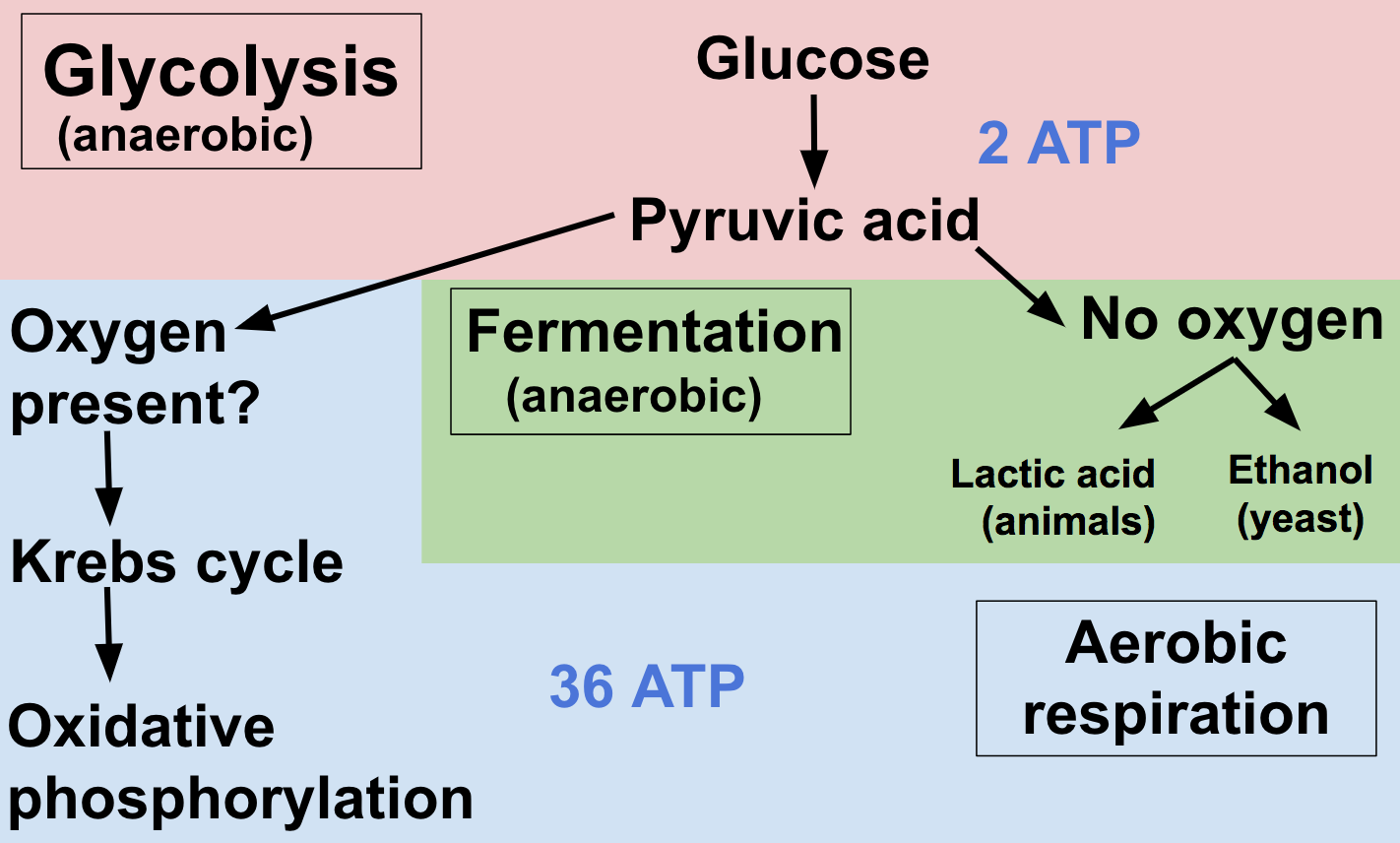Which of the Following Processes Produces 36 Atp
What is the type of chemical reaction used to rebuild ADP into ATP. Krebs cycle and oxidative phosphorylation The rest and recovery period where the muscle restores depleted reserves includes all of the following processes EXCEPT __________.

Cellular Respiration Review Article Khan Academy
Most of the ATP in cellular respiration is produced by the process of chemiosmosis.

. The addition of a phosphate group. Biology 21062019 1600 farhadi2. Part C Which of the following processes produces 36 ATP.
Glycolysis Which of the following processes produces 36 ATP. Out of 36 ATP molecules produced per glucose molecule during respiration. AGlycolysis bKrebs cycle cDirect oxidation pathway dNone.
Releasing a phosphate group from ATP releases energy that can be used by a cell. Rehydration synthesis dehydration synthesis hydrolysis glycolysis hydrolysis of creatine phosphate Krebs cycle and oxidative phosphorylation ANSWER. C 2 during glycolysis and 34 during Krebs cycle.
AMitochondrion bCytoplasm cChloroplast peraxisome and mitochondrion dChloroplast. C6h12o6 6o2 6co2 6h2o 36 atp which of the following is a required reactant in this process. The removal of a phosphate.
Which of the following processes produces 36 ATP. A-ketoglutarate NAD ----- 2 succinyl-CoA 2 NADH 3. Malate 2 NAD -------------- 2 oxaloacetate 2 NADH.
Succinyl-CoA 2 GDP ------- 2 succinate 2 GTP 4. This process is known as aerobic respiration. Krebs cycle and oxidative phosphorylation.
Correct Yes 36 ATPs are produced for each glucose molecule. Yields 36 ATP molecules does not require oxygen produces lactic acid starts process with a glucose molecule Identify the stage of cellular respiration in which each of the following takes place. By pentose phosphate pathway or hexose monophosphate HMP Shunt or Warburg Dickens pathway or direct oxidation pathway one glucose is completely oxidized without glycolysis.
Aerobic respiration in the mitochondria generates the most ATP per glucose module. B 2 are produced outside mitochondria and 34 inside mitochondria. Which of the following processes produces 36 ATP.
Dehydration synthesis Which of the following processes produces molecules of ATP and has two pyruvic acid molecules as end products. The process through which cells produce energy can be summarized by the following equation. Adding a phosphate group to ATP stores additional energy needed by a cell.
Select one A hydrolysis of creatine phosphate B glycolysis C Krebs cycle and oxidative phosphorylation. Which of the following processes produces 36 ATP. D all are formed inside mitochondria.
Which of the following processes produces 36 ATP. The health management and conservation of biodiversity is a challenge. Storing energy in these three groups is very stable for long term use.
The reactions of pentose phosphate pathway PPP take place in. Other questions on the subject. The breaking of the bond between the 5-carbon sugar and the 1st phosphate group.
Most biochemists agree that 36 molecules of ATP can be produced for each glucose molecule during cellular respiration as a result of the Krebs cycle reactions the electron transport system and chemiosmosis. In which of the following process 36 ATP molecules are produced by per hexose molecule. Similarly which pathway generates the most ATP quizlet.
Pyruvate from glycolysis enters the kreb cycle where a net of 36ATP molecules are made along. The complete oxidation of one glucose molecule forms 12NADPH which are equivalent to 36 ATP molecules. Isocitrate 2NAD -----2 a-ketoglutarate 2NADH 2.
Aerobic respiration in the mitochondria more specifically the Keen cycle. Dehydration synthesis Which of the following processes produces molecules of ATP and has two pyruvic acid molecules as end products. Succinate FAD ------------ 2 fumarate 2 FADH2 5.
36 ATP 9 acetyl coA enter into Krebs cycle Krebs cycle 1. Which of the following results in the storage of energy in terms of the ATPADP cycle. Glycolysis Which of the following processes produces 36 ATP.
Krebs cycle and oxidative phosphorylation glycolysis hydrolysis of creatine phosphate. For each molecule of glucose that is processed in glycolysis a net of 36 ATPs can be created by aerobic respiration. Produces 32 ATP molecules Creates four ATP molecules but then gains overall only two Gives off carbon dioxide Gives off water Produces two ATP molecules 1.
A 2 are produced outside glycolysis and 34 during respiratory chain. In this process 12N ADP H 2 are formed which are equivalent to 36 ATP molecules. Krebs cycle and oxidative phosphorylation.
In the glycolysis stage for each molecule of glucose 2ATP 2NADPH and 2 pyruvates are made. Also two ATP molecules are produced through glycolysis so the net yield is 38 molecules of ATP. Adding a phosphate group to ATP releases energy that can be used by a cell.
Which stage of glucose metabolism produces the most ATP.

Biology Flow Chart For Cellular Respiration Complete Respiration Flow Chart Cellular Respiration Fr Teaching Biology Biology Classroom Medical Student Study

Aerobic Anaerobic Respiration Medical School Stuff Biochemistry Fermentation Biology
No comments for "Which of the Following Processes Produces 36 Atp"
Post a Comment